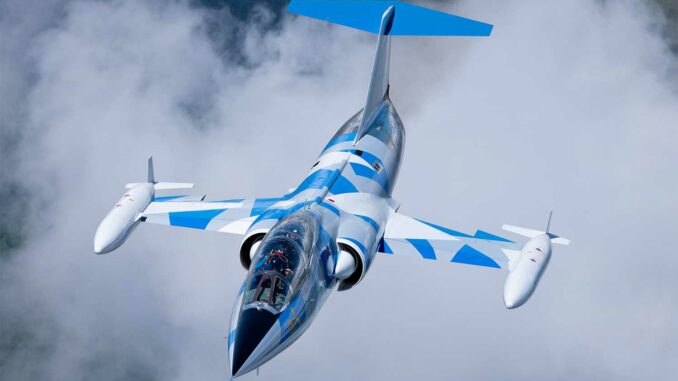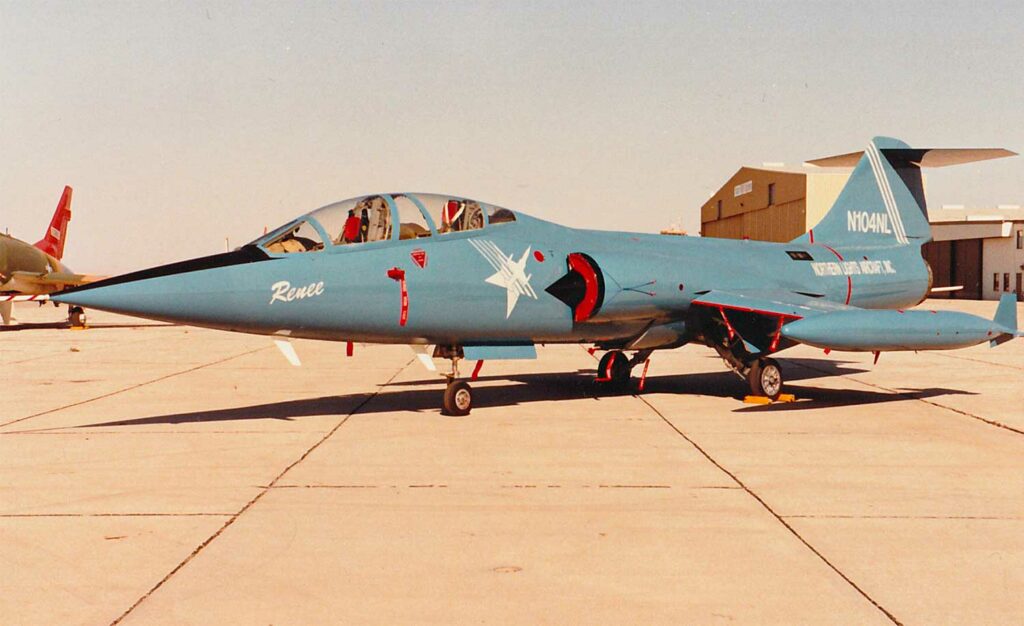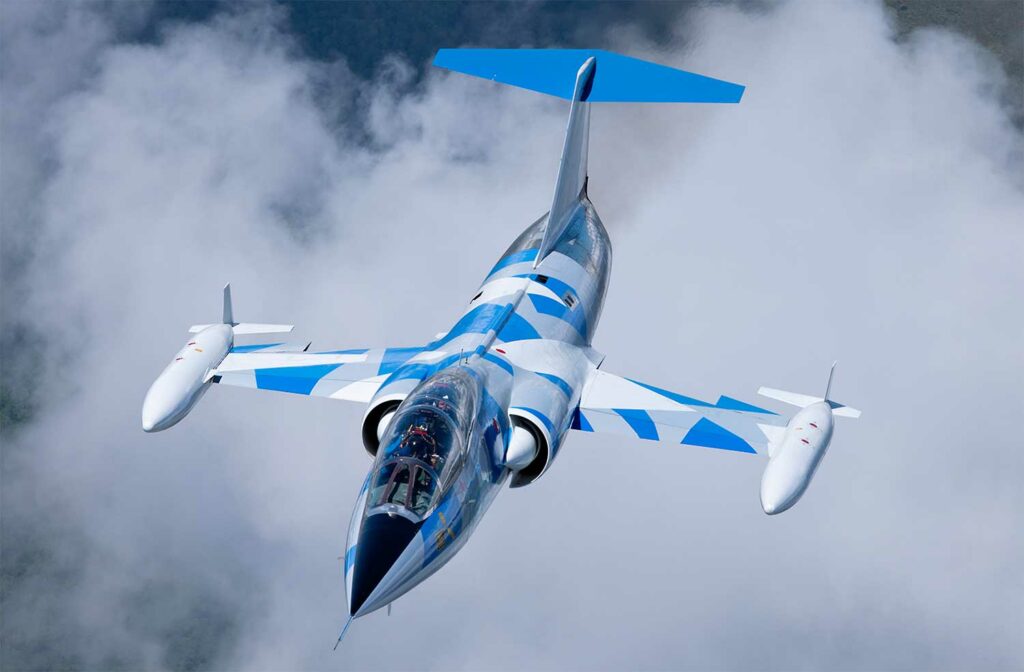
Designed as a supersonic interceptor, the F-104 Starfighter became infamous for its crash rate and technical defects.
A program with dramatic consequences
Launched in the late 1950s, the F-104 Starfighter, developed by Lockheed, was intended to embody the new generation of supersonic fighter jets for the US Air Force. With its radical design, featuring very thin wings and a tapered fuselage, the aircraft promised high speed and unparalleled interception capabilities. But as soon as it entered service, the limitations of the design became apparent, particularly when it was exported on a large scale to Europe.
In the 1960s and 1970s, West Germany, Italy, Belgium and Canada suffered a series of catastrophic accidents. The Luftwaffe, which had acquired more than 900 aircraft, suffered nearly 300 losses, killing more than 100 pilots. This carnage led to a major crisis within the European air forces and sparked a lasting political and industrial controversy. In Germany, the Starfighter was nicknamed “the widow maker” because its use in peacetime had cost so many lives.
Between record crash rates, design unsuited to European missions, questionable industrial choices, and recurring technical problems, the F-104 became the symbol of a technologically ambitious but operationally ineffective military aviation program.

An exceptionally high crash rate
The German example: a textbook case
Among the users of the F-104, the Luftwaffe paid the heaviest price. Of the 916 aircraft delivered between 1961 and 1975, 292 crashed during training missions or operations. A total of 116 German pilots lost their lives aboard the Starfighter, the majority of them during training flights under normal conditions.
The severity of these losses was such that the German public became aware of the problem, prompting the authorities to respond to growing criticism. The nickname “Witwenmacher” (widow maker) given to the aircraft reflects the trauma it left in the collective memory. On average, nearly one in three F-104s was lost in an accident, a rate unmatched in the history of modern Western fighter aviation.
A similar situation in other countries
Canada, which operated 200 CF-104s, suffered more than 110 crashes, several of them fatal. Italy, which continued to use the model until 2004, also recorded nearly 140 losses out of 389 aircraft in service. Overall, nearly 30 to 35% of exported F-104s were lost in non-combat incidents.
These alarming figures reflect not only the dangerous nature of the model, but also its inadequacy for the tactical realities imposed by European and North American doctrines.
A radical design unsuited to the European environment
A pure interceptor converted for a different purpose
The F-104 was initially designed as a high-altitude, high-speed interceptor (Mach 2.0, or approximately 2,400 km/h), intended to climb very quickly to engage Soviet bombers. Its design was optimized for this single purpose: extremely thin wings (7 cm thick), low lift, and high climb speed.
In Europe, the missions assigned to the Starfighter changed radically. NATO forces deployed it for ground attack, reconnaissance, and low-altitude penetration—flight profiles for which it was never designed. The aircraft’s behavior became unstable at low speeds and particularly dangerous during takeoff and landing.
Minimal margins for error
The Starfighter required long runways, favorable weather conditions, and extensive training to avoid losses. Its aerodynamics demanded high approach speeds, which reduced the margin for error in the event of a problem. Minor piloting errors often resulted in serious accidents.
The extremely thin delta wings, while reducing drag in supersonic flight, make the aircraft unstable and difficult to control in tight maneuvers. At low altitudes or in tactical flight, these characteristics become major handicaps.
A procurement policy with questionable motives
Opaque contracts and strong political pressure
The F-104 export program, known as the Military Sales Package Program, was launched by Lockheed with Washington’s support to counter French (Dassault Mirage III) and Swedish (Saab Draken) influence. But corruption scandals quickly erupted: kickbacks were allegedly paid to political and military decision-makers in several countries.
The Lockheed affair, which came to light in the 1970s, revealed that millions of dollars had been distributed illegally to secure contracts in Japan, Italy, West Germany, and elsewhere. The Starfighter export program thus became one of the most controversial in the history of military aviation.
Alternatives available but rejected
Aircraft such as the Mirage III (capable of multi-role missions and well suited to European environments) and the Saab Draken offered more flexible solutions with better overall performance in tactical missions. However, US diplomatic pressure and industrial cooperation agreements favored the widespread use of the F-104 in Western Europe.

Technical defects aggravating the risks
Unstable engine
The F-104 is equipped with the General Electric J79 turbojet engine, producing up to 7,200 kg of thrust with afterburner, but suffering from recurring problems with overheating, pumping and difficult maintenance. Numerous engine failures occurred in flight, including at low altitudes, where recovery options were limited.
Ineffective life support systems
The Starfighter’s initial ejection system—which ejected downward—was completely unsuitable for low-altitude flight, resulting in many unnecessary deaths. It was later replaced by an upward-ejecting seat, but even with this improvement, the pilot survival rate in the event of an incident remained low.
Flaws not corrected despite variants
Several versions were proposed (F-104G, CF-104, F-104S, etc.), with avionics and structural improvements. However, the very concept of the aircraft remained unchanged, with its fundamental aerodynamic limitations impossible to correct without a complete redesign.
War Wings Daily is an independant magazine.